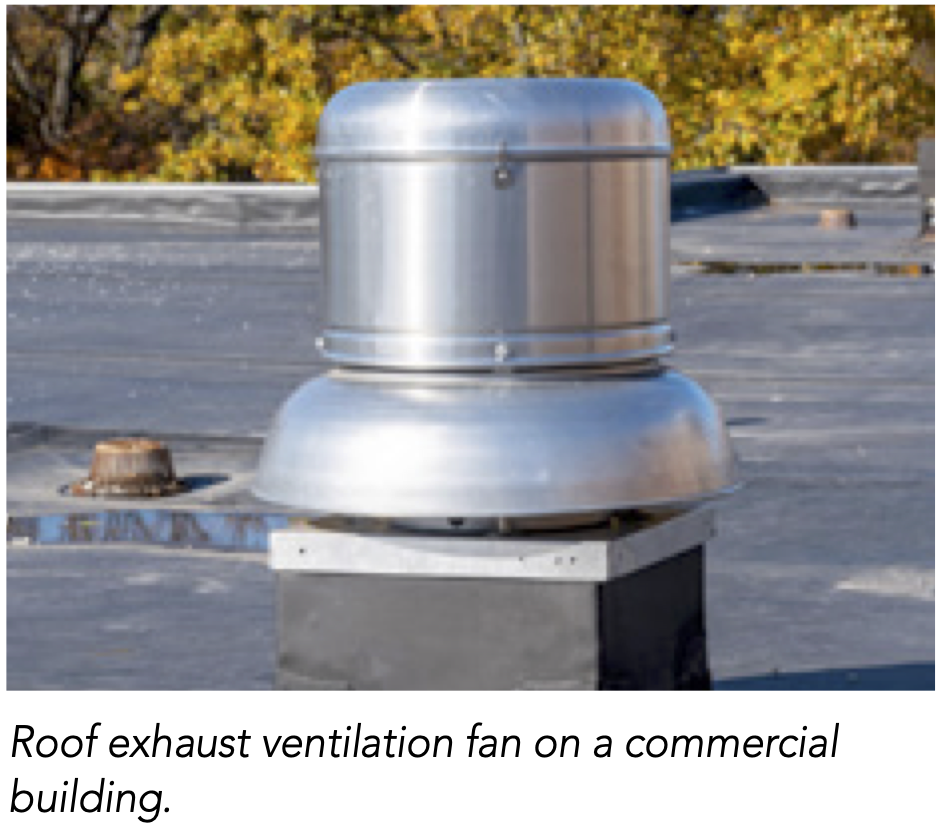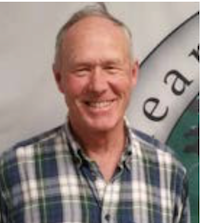Efficient Fans: The Four "F"s of Commercial and Industrial Fans
Anna Siebenborn
ARTICLE COMPLIMENTS OF BETTERBRICKS
Fans are used across commercial and industrial building types for a variety of reasons such as transferring air into or out of a space, removing dust and fumes, regulating or maintaining temperature, and material handling and drying. Highly efficient fans accomplish the same needs and help reduce the amount of energy and costs related to operation and performance.
The four Fs detailed in this article represent the underlying components of highly efficient fans that go beyond the more visible features that operate the fan, such as blades, impellers, motors, and housing. Understanding the four Fs and how they work together will give engineers/specifiers, buyers, installers, and maintenance staff a more comprehensive overview of applicable solutions to common challenges and help achieve the lowest lifecycle cost for the fan.
The First F: Form
Form refers to the shape, size, dimensions, configuration, materials, and general properties of the fan. These factors are often indicated to engineers through design specifications required for the new construction or retrofit project.
Typically, for a given operating point such as airflow and pressure, the larger the fan, the more efficient its operation, due to the amount of air it can move because of blade weight, rotation, and speed. Small fans work a lot harder to achieve the desired airflow condition than larger models.
The Second F: Fit
The physical fit of the product and its ability to integrate into the existing system or specific needs of the newbuild. Important questions to ask when considering how a fan will fit are:
• Does this project allow us to upsize the fan?
• Does the space provide the opportunity to change the layout or positioning of the fan components?
• Do I have to redesign the space or part of the project to create more opportunities for efficiency?
The answers are crucial to fan operation. For between the fan inlet and outlet to achieve ideal flow conditions. If the duct bends come too soon, fan performance will considerably degrade, which is called system effect. The response to these questions can help avoid added costs, project delays, and improperly installed fans that require callbacks to address issues caused by a poor fit.
The Third F: Function
Function involves the action the fan performs and its ability to meet the needs of the project. Highly efficient fans may provide more performance flexibility if the unit does not fully match the design conditions and include additional optimizations – without sacrificing practicality or the need for a complete system redesign for a retrofit project. They also feature non-energy benefits such as:
Reliability and longevity: Updated fan: Updated fan systems are less impacted by breakdowns related to age and length of service. They can reduce the time spent waiting to find replacements for older, outdated components such as motors, shafts, bearings, and belts because modern parts are more readily available in the market. Contractors, installers, and building maintenance engineers may benefit from fewer callbacks to service outdated systems or correct issues related to trying to get old parts to bolt in with newer features.
Noise attenuation: Newer fans are often quieter than older models, which can be helpful in applications where little to no sound is essential, such as hospitals,libraries, commercial kitchens, and retail spaces. Right-sizing a fan may also decrease noise and vibration problems, which could be beneficial to building workers and occupants. Research shows that noise can “degrade residential, social, working, and learning environments with corresponding real (economic) and intangible (wellbeing) losses. It interferes with sleep, concentration, communication, and recreation*,” even at non harmful levels.
Real-time monitoring: Modern fan technology may include additional functionality, such as fault detection and diagnostics, enabling users to monitor performance across systems and devices for on-the-spot assessment. It may also allow for predictive maintenance to 1) ensure performance and eliminate guesswork often used to determine product failures and inefficiencies, and 2) reveal opportunities to optimize operation by identifying systems that may be running continuously, even during unoccupied hours, when not needed.
The Fourth F: Fan Energy Index
Meeting the form, fit, and function criteria is essential for anyone selling, specifying, or selecting a commercial or industrial fan. Doing so can help ensure the fan will perform as needed, avoiding performance issues that could result from not choosing the correct unit for the job. Fan Energy Index (FEI) integrates form, fit, and function into a single metric indicative of energy performance.
The American Society of Heating, Refrigerating and Air-Conditioning TECH HORIZONS Engineers incorporated FEI into its fan-efficiency provision (ASHRAE 90.1) in 2019. In 2021, it was adopted by the International Energy Conservation Code. The metric has been embraced by many states, including Montana, Oregon, and Washington Minimum FEI levels are set by energy codes.
Introduced by the Air Movement and Control Association International (AMCA), FEI essentially replaces previous metrics such as the Fan Efficiency Grade. FEI is a wire-to-air, duty-point metric:
• Wire-to-air means FEI accounts for the combined efficiency of all components of the fan system – motor, controller, and drive – not just the impeller.
• Duty point refers to the specific operating conditions, such as required airflow at a given pressure or temperature, at which the FEI is calculated using selection software.
This comprehensive metric changes with airflow and pressure to identify fans that consume the least amount of energy; the higher the index, the lower the energy consumption of the fan for a given duty point.
Many manufacturers have proprietary software that can be used to select the best fan for a project, based on data input by the user. Software optimized to highlight FEI – coupled with an understanding of the metric – can help engineers/specifiers, buyers, and installers find the most efficient fan and meet project requirements. Some Roof exhaust ventilation fan on a commercial building. companies have opted to have their fans and selection software certified by AMCA to help ensure the software calculates FEI ratings correctly across the diverse options available. Even if efficiency is not a stated requirement, you can use the information provided by the software to meet or exceed building-code standards, prepare for future regulations, and help reduce maintenance and operating costs.
Whether your role is to select, purchase, or install an efficient fan, consider the Four Fs to guide your decision-making process. Additionally, use the FEI metric to help increase confidence that higher efficiencymodels can meet or exceed your performance needs and improve the reliability of a project.
* Noise Pollution: A Modern Plague. Southern Medical Journal. March 2007, Volume 100, Issue 3. For more information about highly efficientfans, visit betterbricks.com/fans.

















